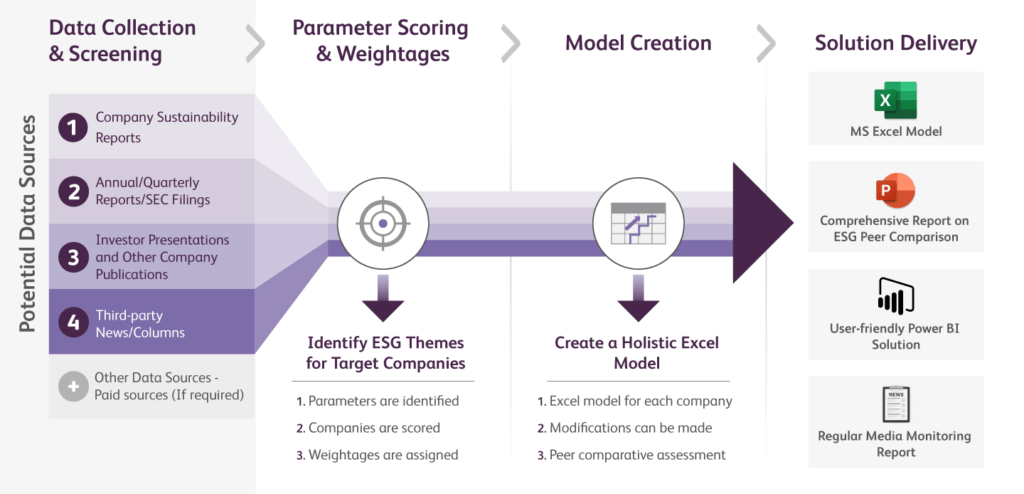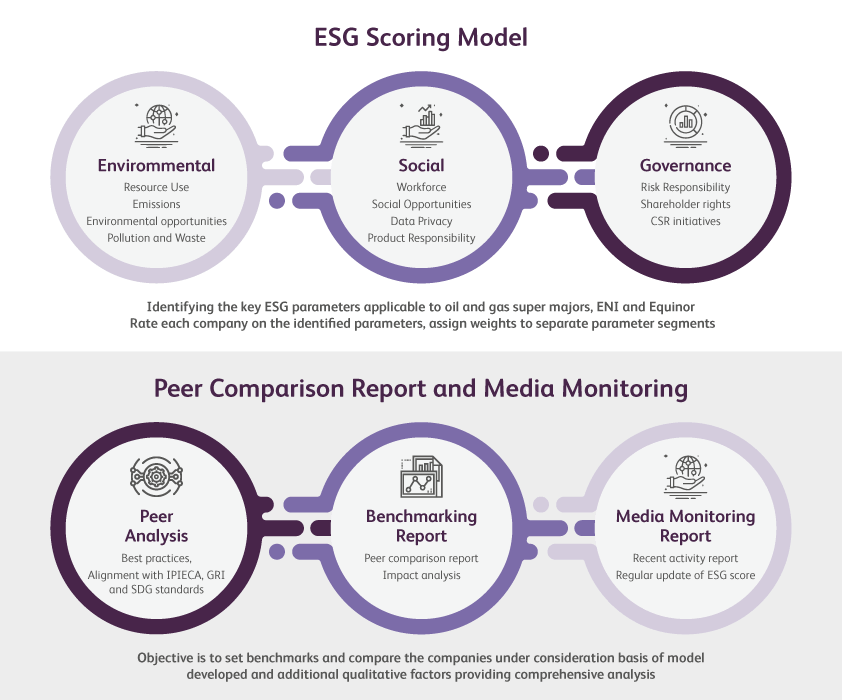The Challenge
With the increasing demand for organizations to integrate Environment/impact analysis into corporate and financial decision-making, big energy players are starting to face new challenges. Many of these challenges are driven by growing accountability on environmental issues, regulatory pressures, increasing investor scrutiny, and better information availability. Without having an experienced environmental partner, organizations will struggle with pushing environmental and carbon initiatives forward.
Our client, an oil & gas giant envisioned reducing its carbon footprint by modifying their existing supply chain. In order to achieve this goal, the client wanted to understand existing carbon initiatives that competitors are taking, so that they can take appropriate action. The client needed guidance on:
- Market Scanning—understanding what trends, policies and initiatives regarding carbon emissions are occurring in the market.
- Adopted Strategies—gaining insight into specific strategies that leading companies belonging to different industries have adopted when reducing carbon emissions
- Exhaustive List of NGOs concerning their partnerships with various leading companies in driving initiatives towards carbon neutrality.
Our Solution
In order to provide the client with relevant and thorough insight into the carbon emission landscape, our team took a thorough approach that would not only give insight but also provide guidance when developing a supply chain with reduced carbon emissions.
Definition of environment parameters
Our team identified the environment parameters relevant to the petroleum industry, which specifically pertained to the target organizations that we selected based on the client’s requirements. We identified parameters that we then defined according to industry standards, which covered the following themes: environment, social and governance. Prior to finalizing the list of parameters, we held an onsite two-day workshop with the client so that they could get a firm understanding of our system and ask any questions that they might have.
Provide Ratings for Companies
We utilized our four-level data compilation and rating hierarchy, which was based on a company’s performance analysis that included qualitative and quantitative indicators as reported by the company. When quantifying qualitative indicators, we scaled each performance indicator using a uniform scale of 1 to 10 decile, which provided the client with a holistic view of other organizations.
Assign Weights to ESG Parameters
Based on extensive secondary research, we assigned weights to each of the environmental, social and governance parameters according to industry standards. During our secondary research based on company initiatives and reported developments, we identified company-wide preference and inclinations towards individual parameters. We also compared target companies for each of the finalized ratings against standardized parameters. In order to ensure the accuracy and validity of the weightages assigned in the model, we finalize the scores after discussion with the client and in-house industry experts.
Excel Model for Scoring & Peer Comparison
Based on the finalized individual parameter ratings and weightages, we developed a comprehensive excel data model. The available inputs were supported by preliminary research for future references, and rates/weightages can be modified if required. The model also allows the client to automatically change the final ratings (or select each ESG pillar), which can give them insight into future initiatives that other companies could take.
Business Impact
Supported NGO collaboration decision through the exhaustive and detailed scoring and peer comparison. Our custom approach ensured that the client’s decision would help drive their initiative towards carbon neutrality. By taking into account qualitative and quantitative information, the client could make the decision that worked best for their specific circumstances.
Helped develop a supply chain that worked to reduce carbon emissions based on the case studies of top companies, existing climate change policies, individual strategies of top companies belonging to different sectors, and competitive landscape analysis. Through this information, the client could see first-hand what strategies would work for their organization’s specific sectors and countries.
NGO Collaboration
The client was able to drive their NGO collaboration decision forward through insights and lists.
Developed supply chain
By looking at what their competitors' environmental strategy, the client was able to create a robust environment strategy.
Talk to One of Our Experts
Get in touch today to find out about how Evalueserve can help you improve your processes, making you better, faster and more efficient.

